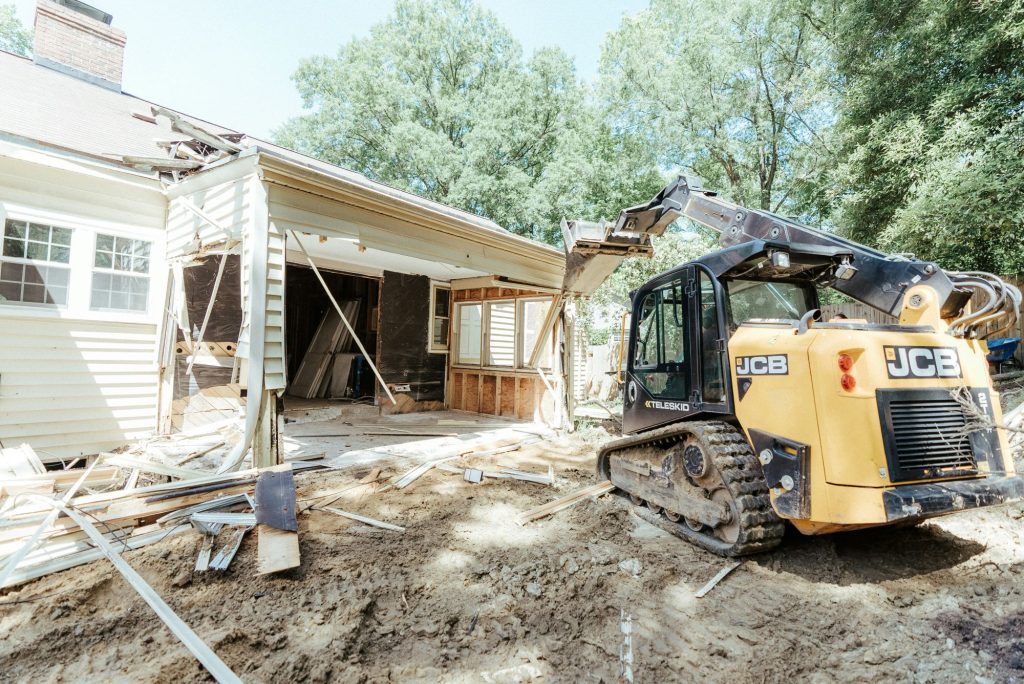
Selling a house with unpermitted work can be a complicated and daunting process, especially in a city like San Francisco, where strict building codes and regulations govern real estate transactions. Whether you’re dealing with unpermitted renovations, additions, or even a simple alteration to the property, it’s essential to understand the legal and practical implications of selling such a home. In this blog post, we will explore how to navigate the process of selling a house with unpermitted work in San Francisco, from understanding the risks to finding ways to protect yourself and your buyer.
Understanding Unpermitted Work
Unpermitted work refers to any changes or additions made to a property without the proper permits or approvals from the city or local government. These alterations might include:
- Additions such as new rooms, bathrooms, or converted spaces like basements or garages.
- Structural changes such as altering load-bearing walls, adding a deck, or installing new windows.
- Electrical or plumbing modifications like rewiring the house, changing the HVAC system, or installing new fixtures without the required inspections.
- Cosmetic changes like new drywall, flooring, or minor renovations that weren’t reported or inspected.
In San Francisco, as in most cities, certain construction or remodeling work requires permits to ensure that the work meets safety codes, zoning laws, and building regulations. Failing to obtain the necessary permits can create significant issues when selling the property.
Why Unpermitted Work is a Problem
When it comes to selling a house with unpermitted work, several key challenges arise:
- Legal and Financial Risks:
- Code Violations: Unpermitted work may violate the city’s building codes or zoning laws. If this is discovered, the seller could face costly fines or be forced to undo the work.
- Liability: If the buyer discovers unpermitted work after purchasing the home, they may hold the seller responsible, leading to potential lawsuits or financial claims.
- Financing Challenges:
- Lender Restrictions: Most buyers rely on financing to purchase a home, and lenders may be unwilling to approve loans for homes with unpermitted work. This could limit the pool of potential buyers who can afford your home.
- Appraisal Issues: A home with unpermitted work may not appraise for its full value. Appraisers are likely to discount any unpermitted alterations, making it harder to meet the purchase price.
- Title Issues:
- Title companies may have difficulty providing title insurance for properties with unpermitted work, as it could potentially lead to unresolved issues down the line.
- Insurance Concerns:
- Insurance companies may be reluctant to cover unpermitted work, or they may charge higher premiums. In some cases, unpermitted work could void the insurance policy entirely.
Steps to Selling a House with Unpermitted Work
If you find yourself in the situation of selling a house with unpermitted work, the following steps will help you navigate the complexities of the process.
1. Get an Assessment of the Unpermitted Work
Before you can take any steps to sell the house, it’s crucial to understand the extent of the unpermitted work. This will allow you to gauge the potential impact on the sale and determine the best course of action.
- Hire a Qualified Contractor or Architect: A licensed contractor or architect can help assess the scope of the unpermitted work. They will be able to tell you if the work poses any immediate safety risks, if it violates any building codes, or if it could be approved retroactively with the right permits.
- Obtain Documentation: If any part of the work was done legally at one point but failed to be properly permitted or inspected, gather any available documents that could support this claim.
2. Consider Applying for Retroactive Permits
In some cases, it may be possible to apply for retroactive permits or correct the unpermitted work before listing the property for sale. This may involve bringing the work up to code, obtaining the necessary inspections, and paying any required fees.
- Contact San Francisco’s Planning Department: If the unpermitted work is significant, such as an addition or structural change, contact San Francisco’s Planning Department or the Department of Building Inspection (DBI) to inquire about the process for legalizing the work. The DBI can guide you through the steps to apply for retroactive permits.
- Understand Potential Costs: The process of legalizing unpermitted work may involve significant costs, including the payment of fines, permit fees, and the cost of bringing the work up to code. Consider these costs carefully before deciding if this route is worthwhile.
3. Disclose the Unpermitted Work
Full disclosure is key when selling a property with unpermitted work. In California, sellers are required by law to disclose any material facts about the property that could affect the buyer’s decision. This includes the existence of unpermitted work.
- Seller’s Disclosure: The seller’s disclosure form (known as the “Transfer Disclosure Statement”) is a legal document in which you must list any known defects or issues with the property. If you have unpermitted work, you are required to disclose it.
- Be Transparent: While it may be uncomfortable, being upfront about the unpermitted work can help avoid legal issues later. It also allows buyers to make an informed decision about whether to move forward with the purchase.
Failure to disclose unpermitted work can result in serious consequences, including the possibility of being sued by the buyer after the sale. Always err on the side of caution and disclose all known issues.
4. Price the Home Realistically
A house with unpermitted work may not be worth as much as a home with all necessary permits in place. Pricing the property appropriately can help attract buyers despite the issues. Work with a real estate agent who understands the San Francisco market and can help you set a competitive price.
- Consider the Market: Depending on the location of your property and the extent of the unpermitted work, you may need to lower the price to attract buyers. A real estate agent can help you assess the market and adjust the price based on the current demand and competition.
- Factor in the Risk for Buyers: Buyers will factor the risks associated with unpermitted work into their decision-making process. This might include the possibility of having to remove the work or fix it at their own expense. Make sure to price the home accordingly.
5. Find the Right Buyer
When selling a property with unpermitted work, it’s essential to find the right type of buyer. Not all buyers will be willing to take on the risk associated with unpermitted work, but some might be open to negotiating a deal.
- Cash Buyers: Cash buyers may be more willing to purchase a property with unpermitted work because they don’t have to rely on financing. Since unpermitted work can complicate the financing process, a cash sale may be smoother and quicker.
- Investors or Contractors: Some real estate investors or contractors specialize in buying properties with unpermitted work. These buyers may be more knowledgeable about the risks and able to handle the necessary repairs or corrections.
6. Negotiate with Potential Buyers
If you’re dealing with a buyer who is still interested despite the unpermitted work, expect negotiations. The buyer may ask for a discount on the asking price or request that you address certain issues before the sale.
- Be Prepared to Lower the Price: Given the risks associated with unpermitted work, it’s likely that the buyer will want a price reduction to account for the potential costs and complications.
- Provide Estimates for Repairs: If possible, get estimates from contractors for any work that needs to be completed to legalize the unpermitted work. Offering these estimates to the buyer can provide transparency and make the sale more appealing.
7. Consider an “As-Is” Sale
If you don’t want to make any repairs or deal with the complications of retroactive permitting, consider selling the house “as-is.” This means the buyer accepts the property in its current condition, including any unpermitted work.
- Buyer Acceptance: When selling as-is, the buyer must understand the risks and agree to take on the responsibility of dealing with the unpermitted work. Be sure to have the appropriate disclosures in place and consider the price reduction necessary to attract such buyers.
8. Consult a Real Estate Attorney
Finally, it’s always wise to consult with a real estate attorney when dealing with unpermitted work. A lawyer can help you understand your legal obligations, ensure that you’re complying with disclosure laws, and protect you in case of future litigation. A real estate attorney can also guide you through the process of negotiating the sale, especially if the unpermitted work presents significant challenges.
Conclusion
Selling a house with unpermitted work in San Francisco is a complex process that requires careful consideration of the legal, financial, and practical implications. By understanding the nature of unpermitted work, taking steps to address the issues, and disclosing the work to potential buyers, you can minimize risks and maximize your chances of a successful sale. Always be transparent, work with professionals like contractors and real estate agents, and consider all your options, including retroactive permits or selling as-is. With the right approach, it’s possible to navigate this challenging situation and sell your home successfully, even with unpermitted work.
Need to Sell Your House Fast? Our Home Buying Process Is Simple and Hassle Free.
Working with cash home buyers like Upside Buyer is one of the quickest ways to sell. Upside Buyer make fast, no-obligation cash offers. Upside Buyer handle all the details, so you can focus on your next move without delays.

Leave a Reply